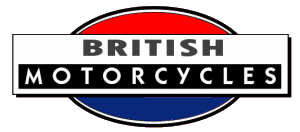

Binks of Nottingham produced motorcycles from 1903 to 1905. The machines were designed by Charles Binks who later became famous for Binks carburettors
1903 The first machine appeared. It had an advanced in-line, 385cc four-cylinder engine fitted into a diamond frame, to drive the rear wheel by an enclosed chain. It had strutted front-forks and a bucket seat, mounted on coil springs, for the rider. This was the world's first inline-four motorcycle.
1904 A further model was offered. This was similar to its predecessor but with the engine mounted transversely. Both models had a clutch and were reputed to have outputs of up to 6hp. That year the in- line machine was sold as the 5hp Evart-Hall, and two other in-line machines were demonstrated at Coventry.
1905 Production costs were high, so Binks turned his attentions to the design of carburettors.
Later the family moved to 67 Snowdon Road, Eccles.
Binks Automobiles
Binks built Leader cars between 1905 and 1909. The bodywork was mounted on a steel chassis and powered by 10hp and 14hp four-cylinder engines. A model was built with a 3-cylinder engine and another had a powerful 15½ litre V8. The name was changed in 1906 to "New Leader",
Binks designed the car built by the Roydale Engineering Co.
The Celer Car Company was founded by Charles Binks in 1904 and built a handful of cars until it ceased production in the same year.
Note: In April, 1913, an advert appeared for carburettors as: 'The most advanced carburettor on the market'. Address is the Phoenix Works at Eccles, Manchester.
Chas. Binks, Ltd.
On this stand will certainly be found one of the novelties of the show. This will consist of a four- cylinder motor bicycle of five to six horse-power, with the cylinders arranged transversely or lengthwise within frame. No pedals are provided, and the engine, which is self-starting, requires no handle or lever to put it in motion. The weight is 160 lbs.
In lieu of the ordinary saddle an upholstered bucket seat is provided. There is no belt, and only one chain.
The Motor Cycle, November 18th 1903
Stanley Show 1903
Chas. Binks,
Nottingham, is showing two models of his four-cylinder machines, which can hardly be called bicycles, a better term being single-track cars. In one case the four cylinders are set transversely, and the others longitudinally, the drive in both cases being by chain from a countershaft. Both the crankshaft (which is one solid forging) and the camshaft are mounted on ball bearings. All the valves are mechanically operated, and in one case are arranged in front of the engine. Four coils are fitted, and one set of batteries, the latter being carried in a basket arranged at the rear of a very comfortable wickerwork seat. A friction clutch is fitted, operated by a lever on the handle-bar.
To start the engine a slight push is given to the machine, and the engine is immediately declutched, when the rider takes his seat, puts in the clutch, and starts off. One carburetter is fitted, which, it is stated, is sufficient to satisfy all the four cylinders at the high speed of 2,000 revolutions a minute — a good speed. It is stated that no vibration whatever exists. The engine is claimed to give six brake horse-power. Both machines are well fitted up, and deserve attention, if only for their novelty. (Stand 137.)
The Motor Cycle, November 25th 1903
Stanley Show 1903
Sources: Graces Guide, The Motor Cycle, Autopasion18.com, fb.com/NottinghamIndustrialMuseum.
If you have further information or a query related to this page, please contact us